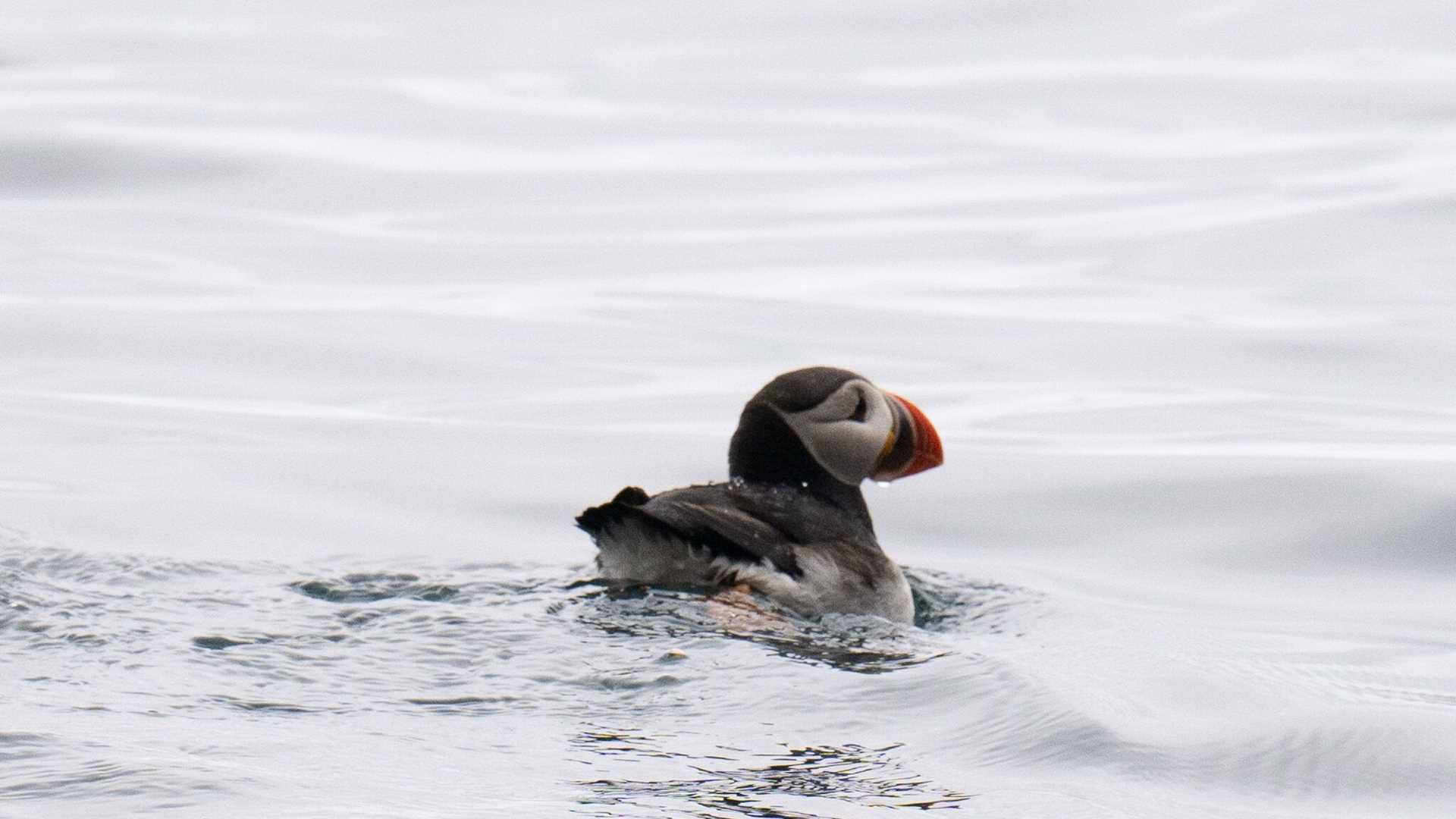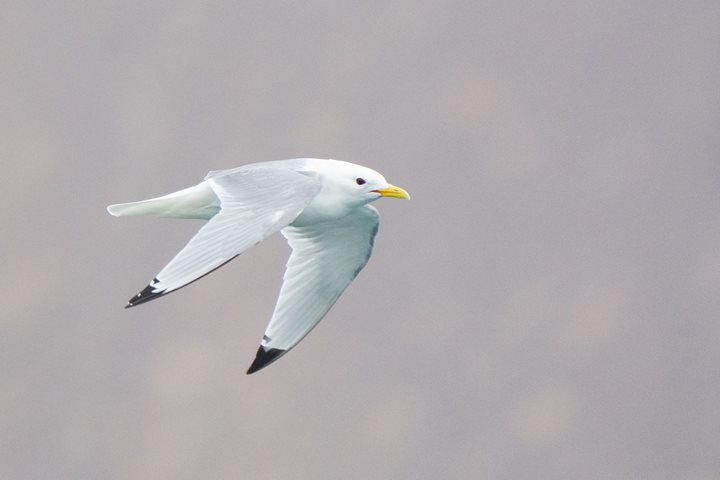We departed the northern coast of Norway during dinner last night to begin the transition across the Barents Sea toward the islands that make up the legendary wildlife paradise known as Svalbard. Fortunately, there is one small island halfway across this sea, Bear Island, that made for a perfect morning adventure in our Zodiacs. Bear Island’s weather and exposure to the vast seas on every side mean that we often cannot get off ship to explore the coast, so we felt very lucky to have such calm conditions. The island is home to thousands of nesting seabirds, including murres, puffins, kittiwakes, and more. Our morning was the perfect combination of calm seas, mild temperatures (around 30 degrees F), and just the right amount of fog to make the steep cliffs feel mystical. Although the name of the island suggests that polar bears are found here, it is so remote that it is rare for bears to be seen here during summer months. If enough drift ice collects around the island, it can host polar bears during the winter.
Like many other places, Bear Island has had its share of ecological challenges, including whaling, walrus-hunting, and overfishing. The vast abundance of auk species (murres, guillemots, puffins, and razorbills) that we viewed today felt like a good sign considering that the murres and guillemots of the island were significantly diminished in the 1980s due to overfishing, which led to poor food opportunities. The fishery has recovered over time, and consequently, these seabirds also increased in numbers.
We are excited to arrive to the northeast section of Svalbard tomorrow, where we will prioritize finding polar bears, walruses, and bearded seals as we take in the stunning landscapes in this unique Arctic environment.







